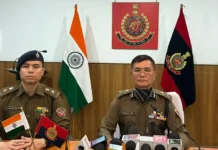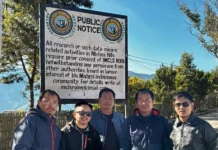Flights Of Fantasy
[ M Panging Pao ]
Recently, a Sino-India conflict flared up with clashes in Yangtse area, located north of Tawang in Arunachal Pradesh. Though the news appeared few days later, it appears that the clash had happened earlier, on 9 December. About 600 Chinese soldiers tried to ingress into Indian territory in Yangtse area. Brave Indian soldiers responded and pushed back the Chinese soldiers after physical clashes between them resulted in injuries on both sides. As per reports, some Chinese soldiers were briefly captured and released later. Flag meetings between the commanders of both sides have temporarily restored peace and the status quo.
Yangtse area is located at high altitudes with rarefied air. The terrain is tough, with very low temperatures during this period. The area is strategically important as it dominates the surrounding areas. Every year, patrols of both sides transgress into each other’s territory along many sectors of the Sino-India border. Most patrols pass off peacefully with both sides maintaining mutual protocols strictly. In fact the viral video of violent clashes is from earlier occasions. However, the Yangtse incident saw a big flare-up with larger forces involved, ending in physical clashes. Luckily there were no fatalities, since there is an existing protocol of not using lethal weapons; otherwise the situation could have spiralled out of control.
India and China have had an acrimonious relationship over the last 60 years. The major conflict was the Sino-India war of 1962, when the Chinese forces entered almost 100 kms inside India along six axes. There have been frequent clashes, including at Nathula in Sikkim in 1967, in 1987 at Sumdorong Chu in Arunachal, the 73-day confrontation over Doklam in 2017, and Chinese incursions in Asaphila, Tuting and Chaklagam areas of Arunachal Pradesh. This was followed by the violent clashes at Galwan valley and Pangong Tso lake in Ladakh during June 2020. Recently, there have been cases of Arunachali youths being apprehended by Chinese forces from different areas and being released later.
China is the second largest economy, and possesses the largest army in the world and remains a big challenge. However, India is also a growing power and will not be an easy pushover. There has been a massive push to improve infrastructure along the border areas, including all-weather roads, railways, airports, key bridges, etc. Army formations have been pushed forward closer to the battleground state. However, many challenges still remain and there is a need to keep up the infrastructure push along the border areas.
The other way to counter the Chinese plans is by improving the border villages and towns. With better connectivity, network, roads, schools, and medical facilities, the locals will stay back in the border villages without migrating to bigger towns.
As a nation, India will defend its territories till the last bullet and the last man. Being a battleground state, Arunachal would be directly affected. To counter China, there is need for constant vigilance, focus and Chanakya Niti. (The contributor is retired Group Captain, Indian Air Force)





